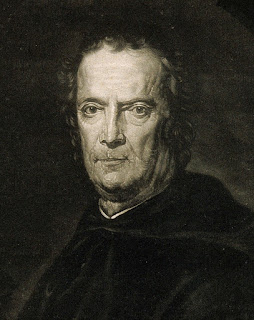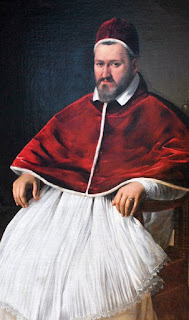Patriotic Venetian who the Pope wanted dead
 |
| Paolo Sarpi was an outspoken critic of the Catholic Church |
He had survived an assassination attack 16 years before and
was living in seclusion, still preparing state papers on behalf of Venice,
writing, and carrying out scientific studies.
The day before his death he had dictated three replies to
questions about state affairs of the Venetian Republic.
He had been born Pietro Sarpi in 1552 in Venice. His father
died while he was still a child and he was educated by his uncle, who was a
school teacher, and then by a monk in the Augustinian Servite order.
He entered the Servite order himself at the age of 13, assuming the
name of Fra Paolo. After going into a monastery in Mantua, he was invited to be
court theologian to Duke Guglielmo Gonzaga.
He then went to Milan, where he was an adviser to Charles
Borromeo, the archbishop of Milan, before being transferred back to Venice to be professor of philosophy
at the Servite convent.
At the age of 27, Sarpi was sent to Rome, where he
interacted with three successive popes. He then returned to Venice, where he
spent 17 years studying. His writings were highly critical of the Catholic
Church.
 |
| Pope Paul V, who plotted to have Sarpi killed |
After Paul V was made pope, Venice adopted measures to
restrict papal prerogative, but Paul V excommunicated the Venetians. Sarpi
entered the argument and set out principles, which struck radically at papal
intervention in secular matters. A compromise was finally arranged between the
Pope and Venice through Henry IV of France
Afterwards, however, Sarpi became the target of an assassination
attempt instigated by the Pope. In 1607, an unfrocked friar assisted by two
other people agreed to kill Sarpi for the sum of 8,000 crowns, but the plot was
discovered and they were arrested and imprisoned after crossing into Venetian
territory.
The following month Sarpi was attacked and left for dead
with 15 stiletto thrusts. His attackers were welcomed back into papal territory
but the pope’s enthusiasm for them cooled after he discovered Sarpi had
survived his injuries.
His would-be assassins settled in Rome and were granted a
pension by the viceroy of Naples.
Plots continued to be formed against Sarpi and he
occasionally occasionally spoke of taking refuge in England.
But he stayed in Venice and served the state until the end.
His last words are said to have been: ‘Esto perpetua,’ or ‘May she endure
forever.’
These words were later adopted as the state motto of American
state of Idaho and appear on the back of the 2007 Idaho quarter.
A bronze statue of Paolo Sarpi stands on a monument to him
in Campo Santa Fosca in the Cannaregio district of Venice near Strada Nova. It
is close to the place where he was stabbed by the Pope’s would-be assassins.
Travel tip:
Liceo Classico Paolo Sarpi, established in 1803, is a public
high school in Bergamo’s Città Alta, which is ranked highly nationally because
of the teaching methods and the subjects studied. Students shared their
experience in a 2012 television documentary film, Gli anni e I giorni.



